While living in combat zones, children frequently witnessed the destruction of their communities and the violent deaths of their loved ones and other victims of the bombings. In an endeavor to provide an outlet for healing and analyze the effects these traumatic experiences had on children, teachers encouraged evacuated Spanish children living in school colonies during the war to draw their experiences. Some drawings were made without specific requirements, whereas others were produced according to a general theme dictated by the teachers.
Comments closedCategory: Drawings
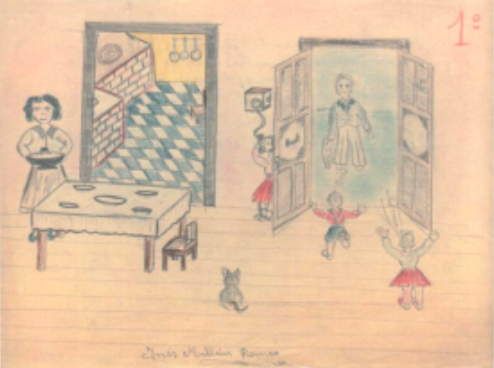
A common theme in the children’s drawings were depictions of peaceful life before the war and contrasting images of the breakdown of familiarity and the presence of war in daily life. For example, this drawing was created by a 13-year-old boy and shows a typical happy family before the war. The mother is in the kitchen preparing a dinner, while the father returns home, greeted by his children at the door.
Comments closed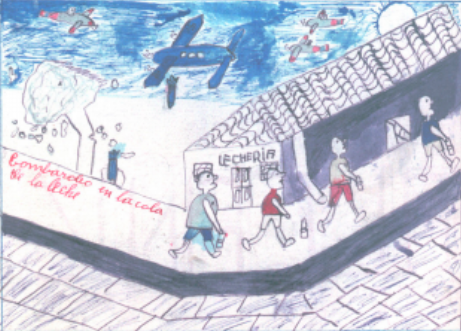
In contrast, this drawing represents the presence of war in daily life. Drawn by another 13-year-old boy, the image shows a line of people waiting for milk, while the sky above them is dark and filled with bombers. On the left of the drawing, a tree is toppled by a falling bomb. Drawings of the everyday were likely a common choice for children because they felt nostalgic about life before the war, wishing to return to the peace of the past and escape the unfamiliarity of the present.
Comments closedChildren frequently chose scenes of graphic violence and destruction as subject matter for their drawings. They likely chose this theme because memories associated with the death of people close to them and the devastation of their once-familiar surroundings are the most traumatic and enduring. These events are often also too shocking to put in words, so expressing scenes of violence through art likely has an
increased therapeutic effect.
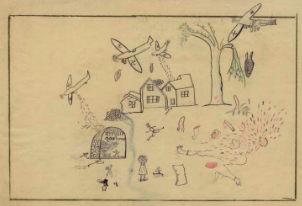
For example, the drawing above was made by a 12-year-old girl and depicts Nazi planes bombing a neighborhood and violently killing an innocent civilian, while a young girl stands in the front, arms raised with an expression of fright. This scene is something the artist most likely witnessed firsthand, and the young girl in the drawing most likely represents herself during the event: alone and scared.
Comments closedDrawings of children living in school colonies generally depict their new life in a positive light, perhaps expressing the relief children felt coming from a dangerous and depressing situation to a well equipped school colony. However, there is evidence that not all children’s reactions to evacuation into school colonies were entirely positive. These mixed feelings were expressed in some of the children’s drawings which show themes of loneliness and homesickness.
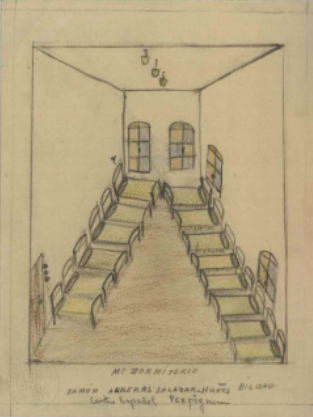
For example, this drawing made by an 11 year old boy depicts a dormitory in the school colony. The room appears very bare and lacks joy or character, creating an overall mood of uniformity and desolation. This mood likely reflects a sense of isolation the child felt from being separated from his family and friends, and a sense of nostalgia for his more lively home before the war.
Comments closed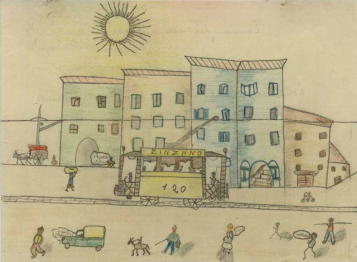
Jamie Barrio, 12 years old. “Street in Madrid: A Scene of the Child before the War.”
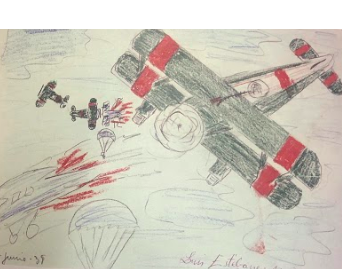
Luis Estébanez, 12 years old. “Picture of dogfight.”
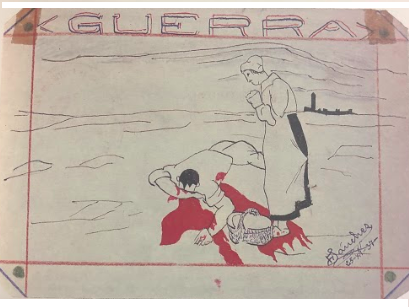
Félix Sánchez del Amo, 14 years old. “Guerra.”
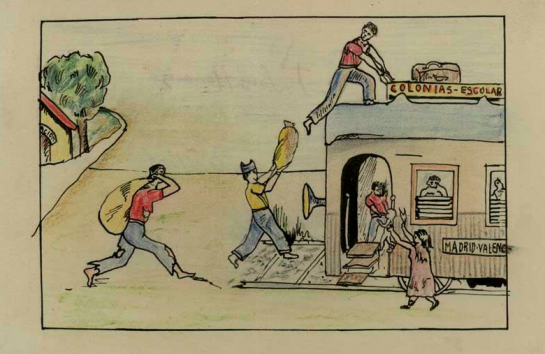
F. Sanz Herranz. “Evacuation.”

Gloria Boada, 12 years old. “Bedroom in the Colony.”
Comments closed